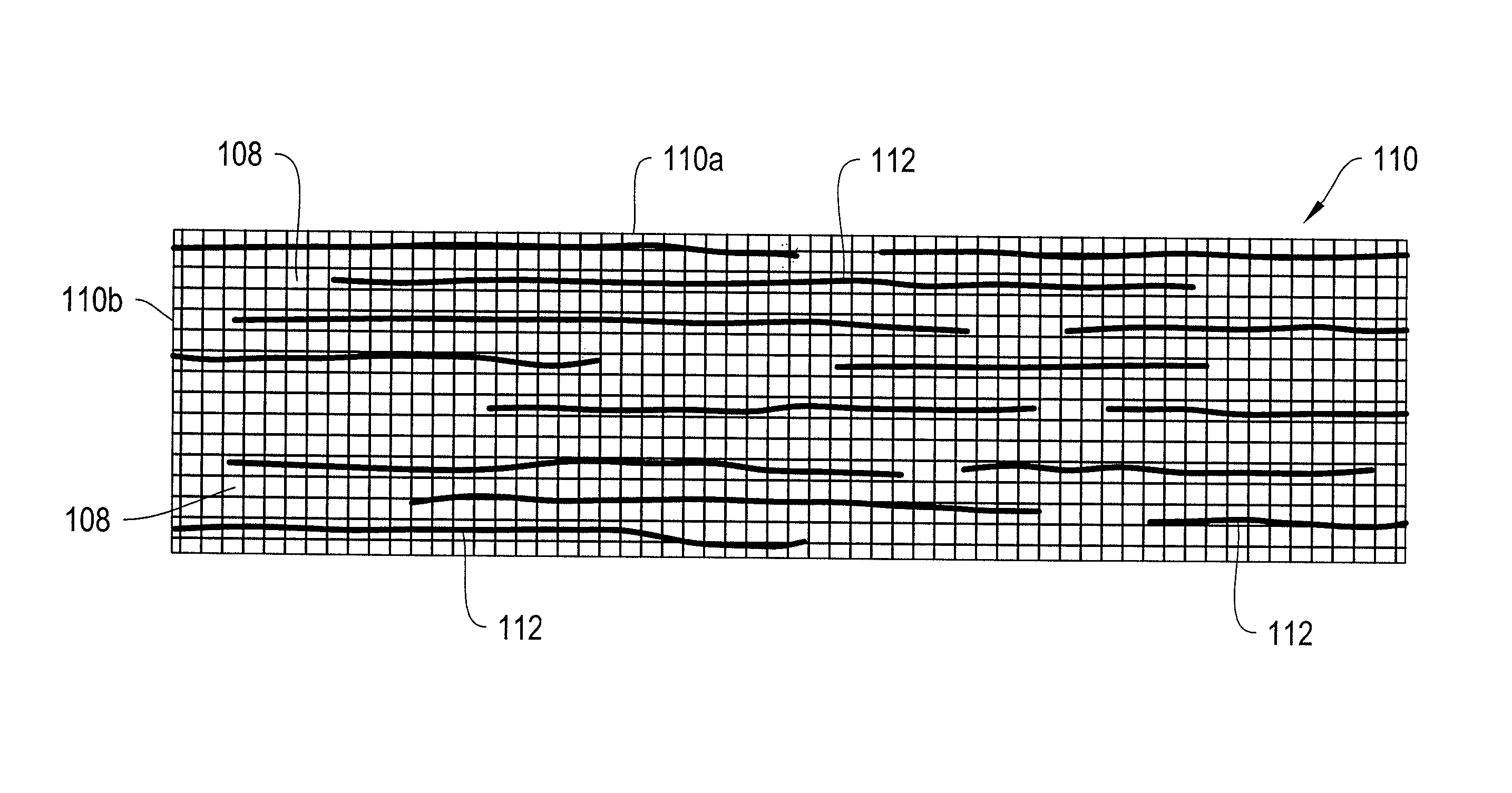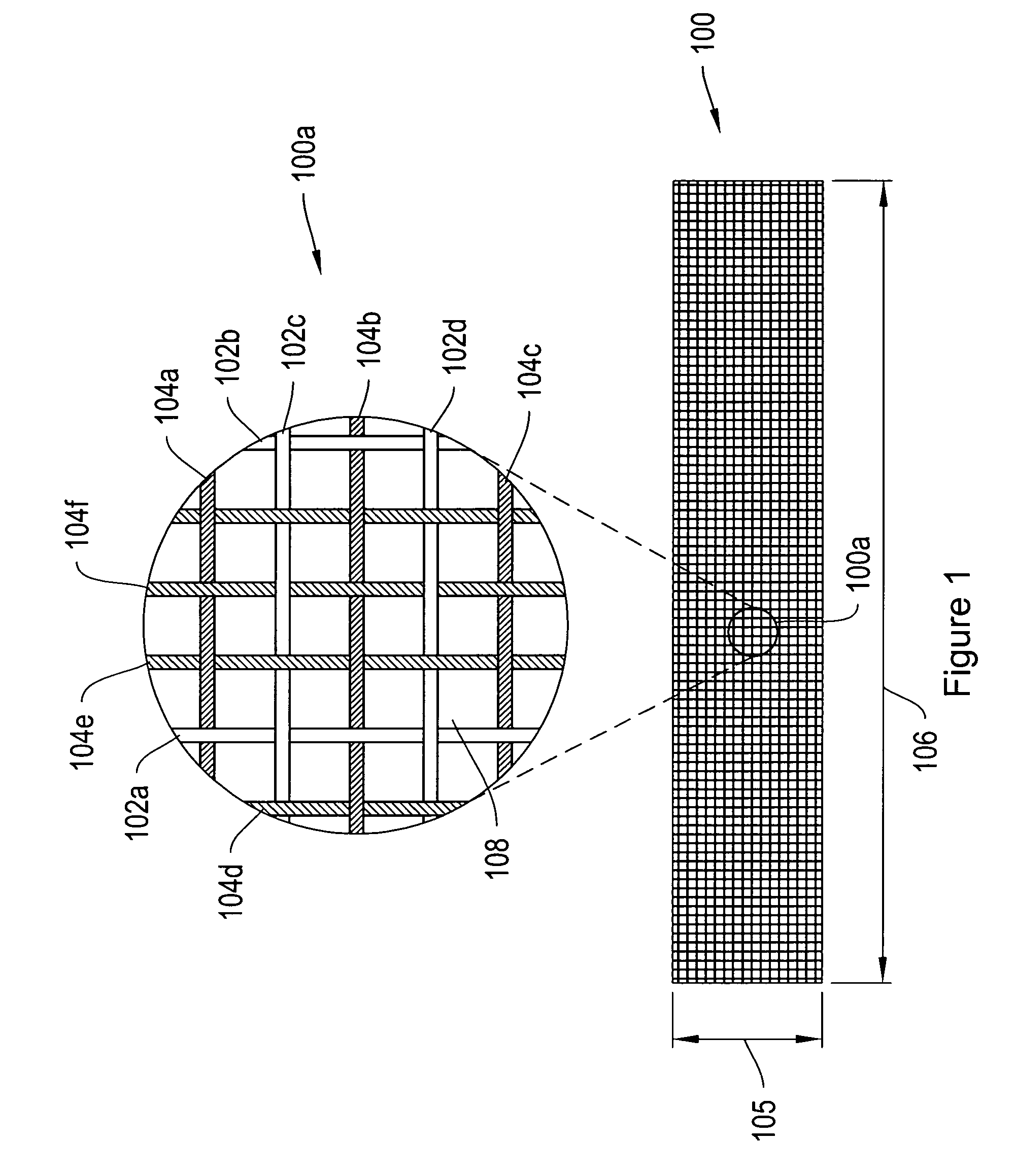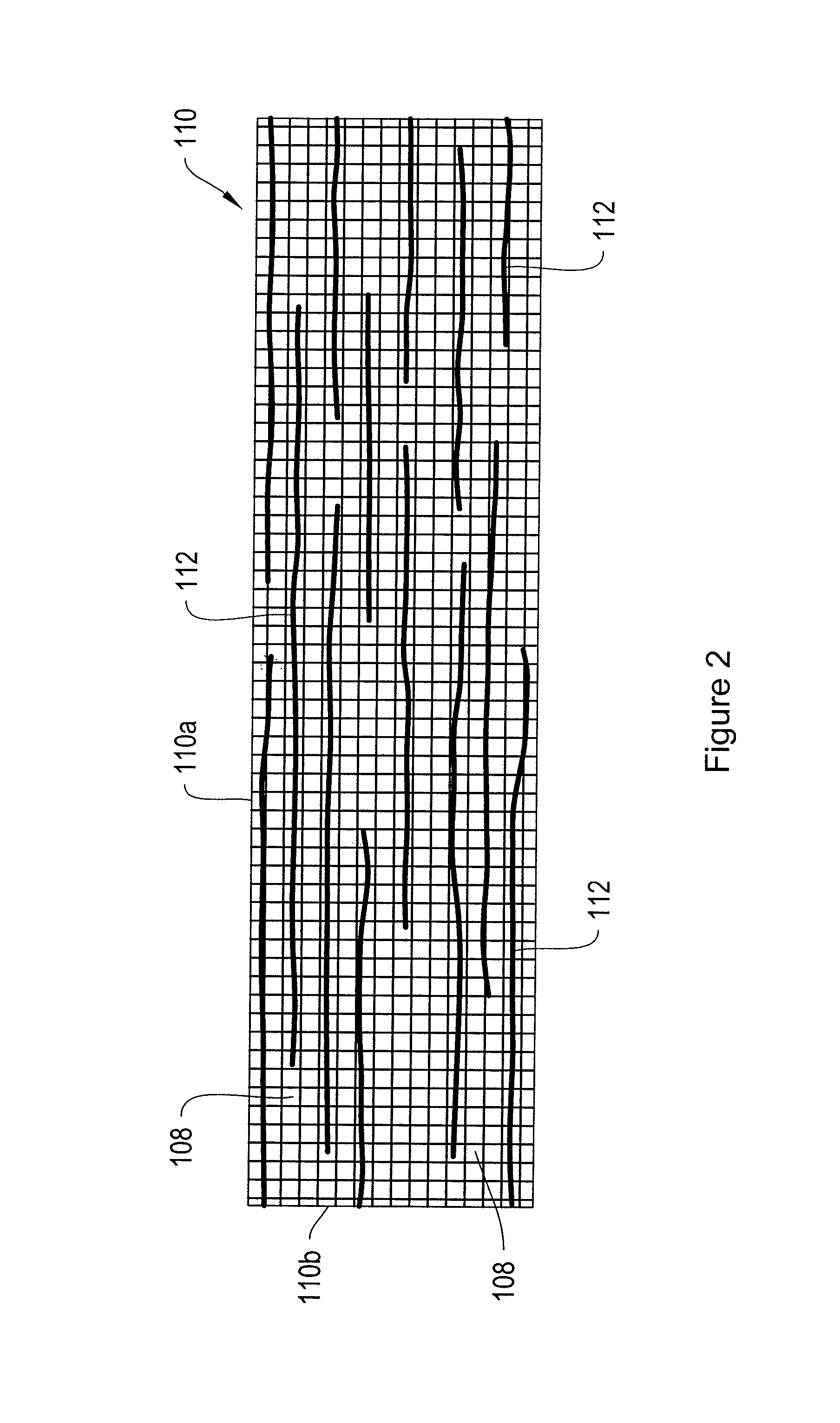Implantable mesh combining biodegradable and non-biodegradable fibers
a biodegradable and fiber-based technology, applied in the field of mesh slings, can solve the problems of insufficient response time, early recurrence of pelvic floor disorder, urinary leakage out of the urethra during stressful activity, etc., and achieve the effects of enhancing acute inflammation, facilitating tissue in-growth and scar tissue formation, and increasing the size of pores/interstitial gaps between fibers
- Summary
- Abstract
- Description
- Claims
- Application Information
AI Technical Summary
Benefits of technology
Problems solved by technology
Method used
Image
Examples
Embodiment Construction
[0018]As described in summary above, in various illustrative embodiments, the invention is directed to a supportive sling formed from a material that encourages prominent and permanent formation of scar tissue upon sling implantation and optimizes the sling tension post surgery using a combination of non-biodegradable and biodegradable materials.
[0019]FIG. 1 shows exploded section 100a of an implantable supportive sling 100 having both non-biodegradable 102a-102d and biodegradable 104a-104f fibers according to an illustrative embodiment of the invention. As shown, in the embodiment of FIG. 1, the biodegradable 104a-104f and non-biodegradable 102a-102d fibers are interdispersed with each other. The fibers 102a-102d and 104a-104f may be, for example, braided, knitted or otherwise woven together. The sling fibers 102a-102d and 104a-104f may be formed from one or more filaments, which may be made from one or more materials, or may be formed as monofilaments. According to the illustrativ...
PUM
 Login to View More
Login to View More Abstract
Description
Claims
Application Information
 Login to View More
Login to View More - R&D
- Intellectual Property
- Life Sciences
- Materials
- Tech Scout
- Unparalleled Data Quality
- Higher Quality Content
- 60% Fewer Hallucinations
Browse by: Latest US Patents, China's latest patents, Technical Efficacy Thesaurus, Application Domain, Technology Topic, Popular Technical Reports.
© 2025 PatSnap. All rights reserved.Legal|Privacy policy|Modern Slavery Act Transparency Statement|Sitemap|About US| Contact US: help@patsnap.com



